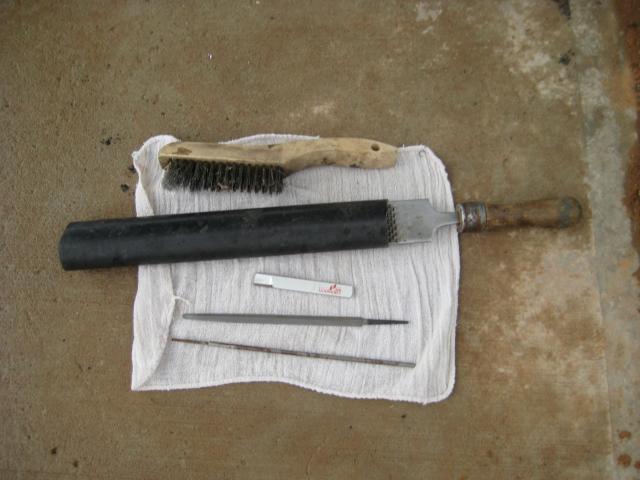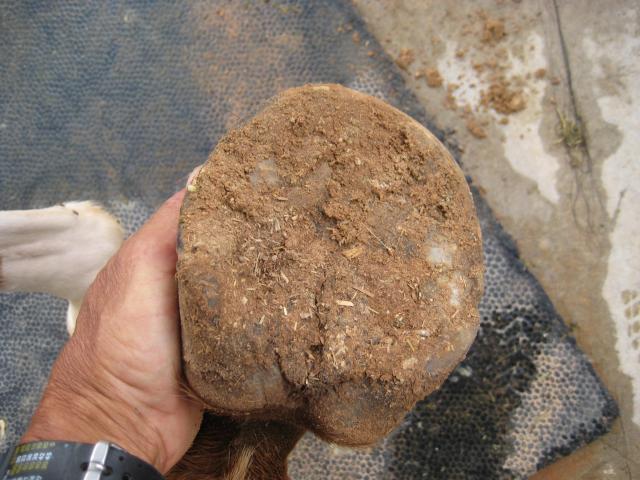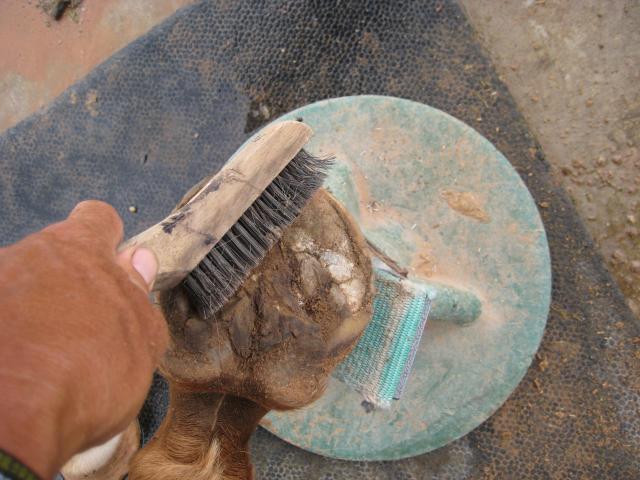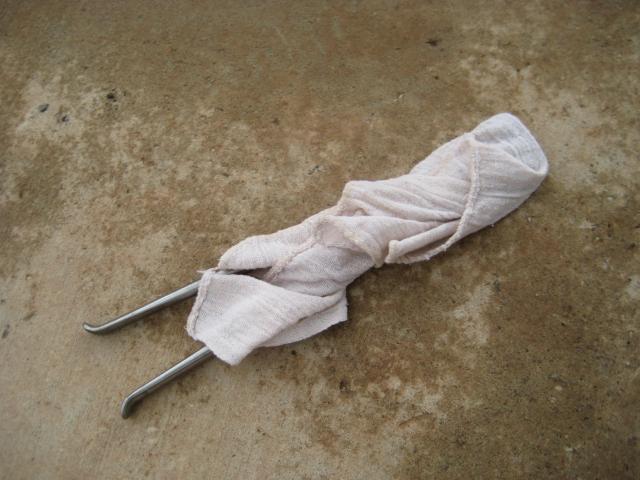There are many reasons for that development, but the fact is that more and more riders and horse owners are now trimming their horses hooves without the help of professional hoof technicians and farriers. Protective horse boots are replacing traditional horse shoes in ever increasing numbers. The Glue-On horse hoof boots and Easyboot Gloves are being used more and more in all equestrian disciplines.
Besides acquiring the necessary knowledge and training for hoof trimming, the horse owner also needs to know what tools to get for starters. Looking through tool catalogs, a newcomer might get quickly overwhelmed.
Out of all the available tools, I’ve selected five that I consider essential for successful hoof trimming:

These five are a must. Without having all five available, do not even start trimming your horses hooves.
Hoof rasps come in a range of prices from $5.00 to $25.00; hoof knives from $3.00 to $75.00; nippers from $35.00 to $225.00. Like in many areas of the tool market, you get what you pay for. Do not buy any cheap tools: you are wasting your money. They will not work well, make life hard and sooner or later you will throw them out to get something that works. Believe me, I have been there and learned the hard, or I might say, the expensive way.
Get some good tools, GE nippers are arguably the best, depending on your hand size, get nippers between 12 and 14 in. 15 in are also available, but I would only recommend them if you have very large hands and long arms. SaveEdge rasps are a good value. Get a handle with it. Purchase a hoof knife that fits your hand: middle to upper price range will suffice here; there are a lot of good knives around. Before buying a hoof knife, spend several minutes holding it, feeling it. Carry it around the store for a while, mimic trimming movements to get a feel for it. It has to feel right in your hand.
The hoof jack is a one time investment, yes, somewhat pricey, but you have to have a hoof stand. The hoof jack is one of the best. It comes with a cradle as well, so it saves your back. You would be wise to get one right away, not after you suffered already for a year and your back is out. By then, you already will have spent more money than the hoof jack costs on body work, massage and chiropractic. The big advantage the Hoof Jack has over other hoof stands is the stability. It won’t tip over if you have an unruly horse or one that constantly tries to pull the hoof away from you. Furthermore, you can stabilize it even more by placing your feet over the base. It is really solid then, no other hoof stand lets you do that.

These five tools are necessary to do good and effective hoof trimming. At the Global Endurance Training Center in Moab, we have been using and testing these tools for years and found them to be very useful and also sufficient for most hoof trims. They all have quality and they all last well. Let’s say you invested $400 to $500. Now you need to take care of them to increase their life expectancy and usefulness.
Below are some maintenance tools that are inexpensive to acquire but will save you lots in the long run.

We have sharpening tools for your hoof knives, the Swissistor tool works the easiest. Chainsaw sharpening files are also popular, work really well to sharpen the curve of the hoof knife. Stones and metal files do not work as well for the curved tip.
Your rasp should always get stored in a piece of cloth or a protective sleeve. I like to use piece of irrigation pipe. It works great and doesn’t cost more than a dime at the most.

A new rasp should last you for about 20 horses; let’s say about 80 to 100 hooves. Provided you are following a few tips and tricks to extend the life of a rasp:
1. Always clean the hoof before rasping. The hoof below is in no shape to put your expensive rasp to work.

First use your hoof pick to clean as much as possible, then the wire brush to remove all sand and grit.

Now the hoof is ready for using the nippers or the rasp.

2. Use your nippers more than your rasp. It is easier and time saving.
3. Use the whole rasp. Too many people have a tendency making short strokes, make long and smooth strokes.
4. Use the rasp in a singe direction. No back and forth scrubbing, but instead in the forward cutting way, the way the rasp pattern is designed to cut. Look at the rasp so you understand the way it cuts.
5.When switching from using the nippers to the rasps, don’t just toss your tools around on the ground. Place them carefully on a soft towel or board. You can also use the magnets of your hoof jack to lean the tools against when not using them.
6. After finishing your trim, brush your rasp clean with a non metal brush. Wire brushes will dull the rasp. Then store them in a dry environment. Rust will shorten their life.
7. Have all your tools protected when in transport. Don’t let them bounce around in a box.
A word on the nippers: good nippers can last you many years. The same rules apply for protection as with the rasps. Don’t use them on a dirty hoof, treat them with great care and use some oil or WD 40 to keep them protected from moisture. Rasps should not be oiled, however, it compromises the cutting and makes them collect dirt. Even when you take good care of your nippers, eventually they will dull. You can send it in to have it refurbished. Do not attempt to sharpen the nippers yourself. You will end up ruining them. Guaranteed. It takes great skill and knowledge to sharpen nippers. There are also mail-to services available to sharpen your rasp, but to make it cost effective with shipping, you should mail in several rasps together.
After you are done with your trim, wrap your nippers in a sleeve or protective cloth piece.

Hope these tips will help you getting most out of your investment.
Till the next time,
Your Bootmeister




